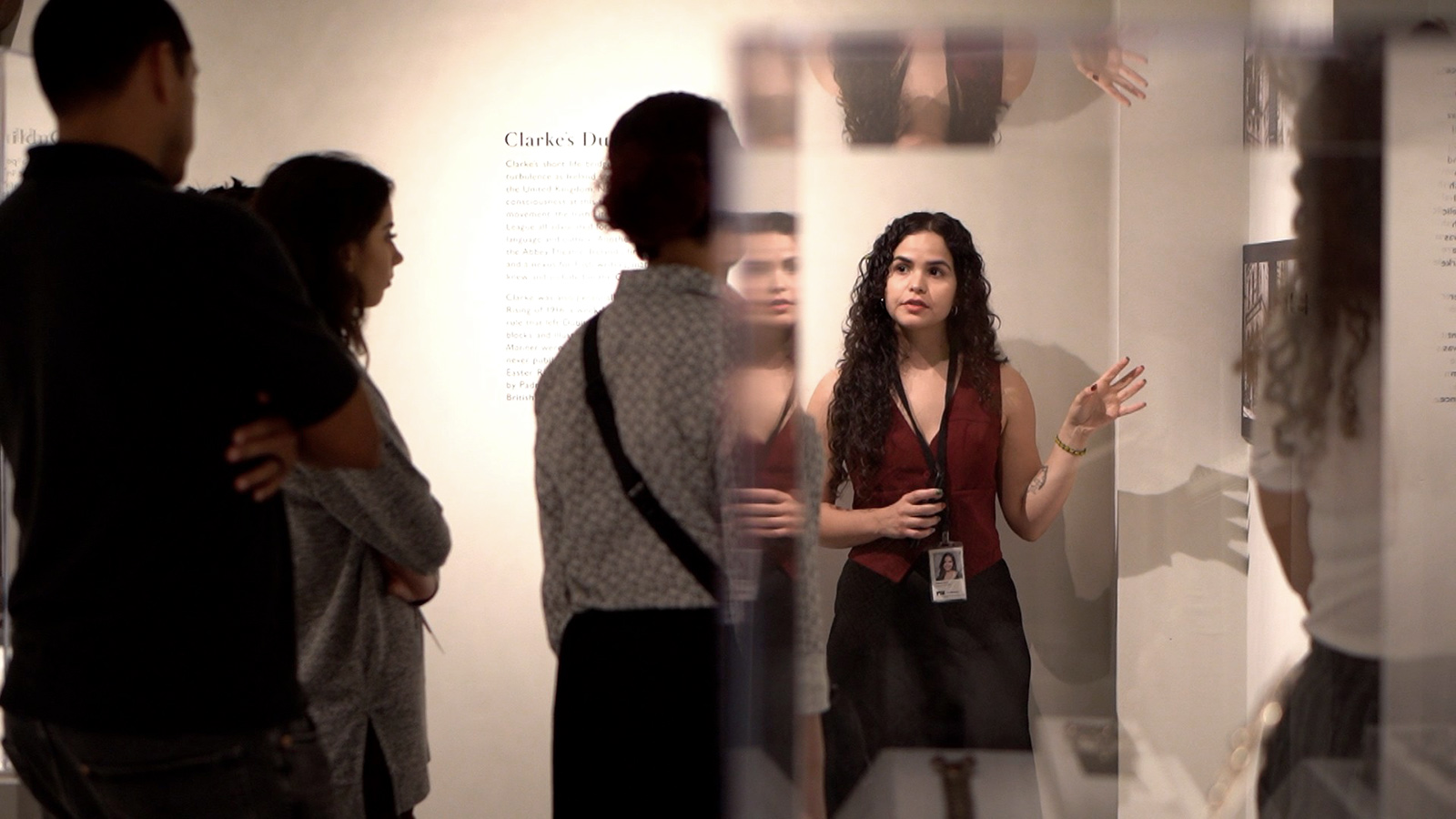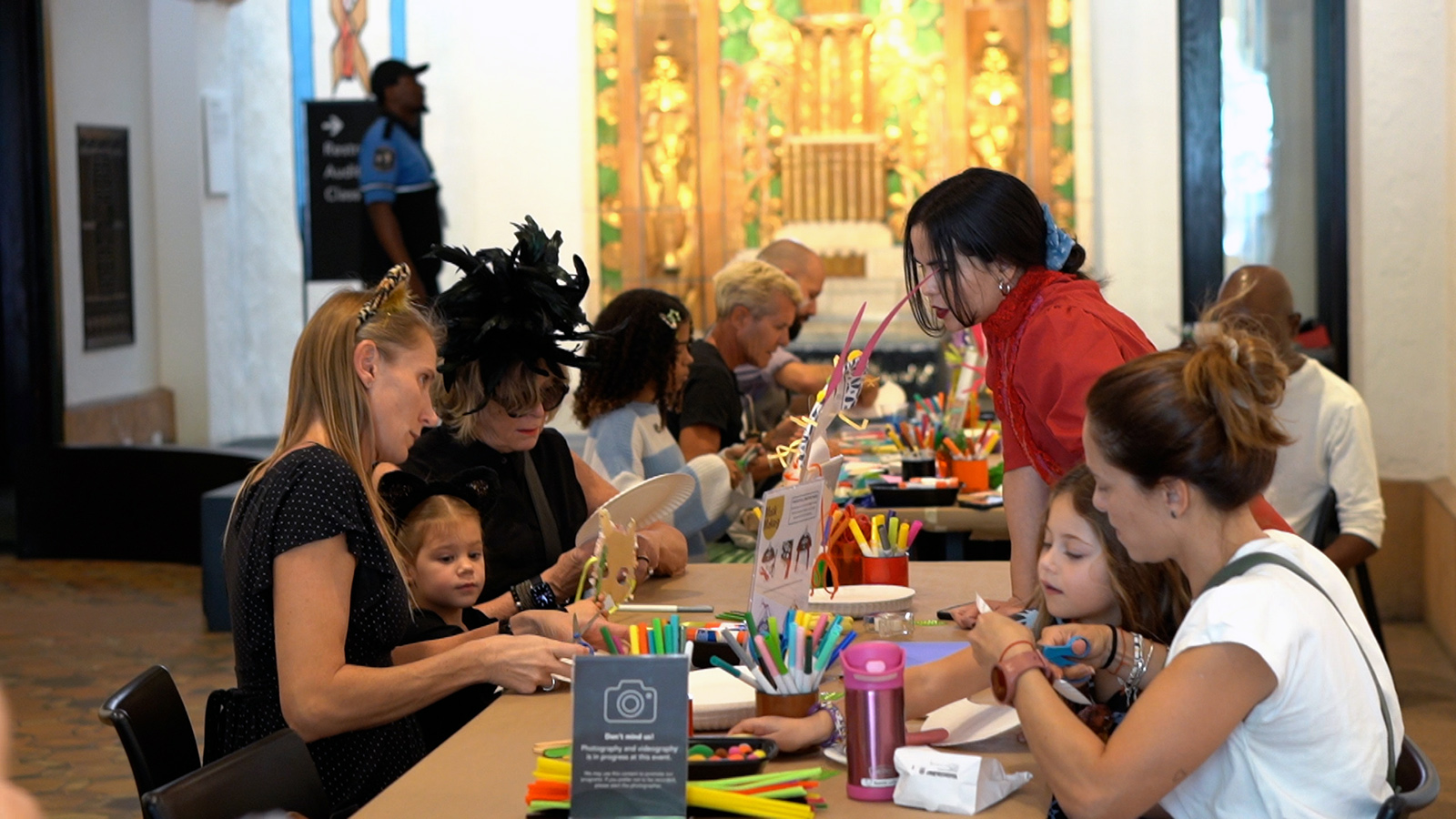June 10, 2025
What does it take to keep a museum collection alive, accessible, and meaningful? At The Wolfsonian, chief registrar Kim Bergen and museum educator Susana Perez each bring their own form of stewardship to the table. From cataloging cigar cutters and coordinating transatlantic shipments, to leading exhibition tours and demystifying printmaking for third graders, their work spans the behind-the-scenes and the front lines of museum life. Kim and Susana recently sat down to discuss research rabbit holes, sifting through objects in Paris with founder Micky Wolfson, and the importance of connecting past and present for future generations.

Susana: I'm not going to lie—when I first met you, I found you kind of intimidating.
Kim: Really?
Susana: Yeah! I was a graduate assistant at the time, and I remember you walking by and thinking, "Oh my god, she's so intimidating!" But then we talked in the lunchroom, and I realized, "Ok, she's not so bad." [laughs]
Kim: I hope I'm not intimidating! I'm just always rushing around like a chicken without a head. You know how it is.
Susana: You do so much! I've always wondered what it would be like to do your job.
Kim: It's a lot of record-keeping. Once objects arrive, I catalog them—and that's my favorite part. Every object requires some research, and I'm always learning something new. Like cigar cutters—I'd never thought about them until we got a few hundred to catalog!

Susana: I think if I had your job for a day, I'd be most excited about getting physical and moving stuff in the Annex.
Kim: I've got the keys to the kingdom, so anytime you'd like! [laughs]
Susana: Sneak me into the Annex so I can take a chair—kidding! But seriously, I heard you went to Paris to pack up items for the collection from Micky's apartment?
Kim: I did. Initially, I was just supposed to inventory everything for customs and shipping estimates. But Micky decided mid-trip that he wanted it all packed and shipped right then. It was a huge project—tons of objects, over 350 rare books, and about 600 reference books. I even missed my flight back.
Susana: That sounds intense. What was it like working alongside him?
Kim: Constant surprises. He had stuff everywhere, in drawers, on surfaces, under the bed. He organizes by where he bought things, not by type. It was satisfying to get it all inventoried and packed, though. And Google Image Search became my best friend.
Susana: Do you fall down research rabbit holes a lot?
Kim: Oh, all the time. I try to stay disciplined because we get so many objects, but sometimes I can't help it. There's this perpetual pile I call my "dead body"—because no matter how much I work, it's always lying there, waiting. [laughs]
Susana: I think I'd love that—but I'd probably fall down too many rabbit holes. Like, I'll find the maker, then the company, then the CEO's cousin . . .
Kim: You have to set limits on how far you go. When I catalog, I try to place the item in time and space, understand its function, describe it clearly. The idea is that someone should be able to pick one chair out of a thousand based on your record. So, what's your favorite part of your job?

Susana: To be honest, giving tours. When I first started working in museum education, they were my biggest fear—but now I have so much fun with them. If it's a smaller group, it feels like an intimate conversation. If it's a bigger group, it's more like theater. And I really love nerding out about objects.
Kim: So, if we switched roles for a day, what part of your job would you want me to experience?
Susana: Oh, definitely a full day in the classroom with kids. Those long days with STEAM+, like 8am to 3pm, school after school. It's a lot. You'd get the whole experience.
Kim: Thanks? [laughs] What do you cover with them?
Susana: STEAM+ is a program funded by the City of Miami Beach. I teach third and fourth graders about printmaking using foam stickers and geometry. They make their own prints and eventually embed them into postcard-inspired collages that tie into Florida's ecosystems. They visit Frank [chief librarian Frank Luca], learn how prints are made. It's hands on—and teaching it forced me to learn the basics really well myself.

Kim: I think I went into art history out of a love for beautiful things and how they're crafted. It was a struggle to get into the field. When I asked my professors for advice, they'd say, "If you don't want to teach, there's really nothing else to do." That was such a turnoff, because you really can do anything, you just have to be creative. So that's what I did. I said, "I like this field, I want to go into it, and I'll figure it out." I happened to fall into museums, and I've been working in them ever since I was a freshman in college. I feel really lucky—I can truly say I love my job. We're saving our cultural collections for future generations to learn from, and we learn from them too.
Susana: That's really powerful. Every time I give a tour, or work with FIU students, or any visitor, I'm reminded why I love what I do. I remember one student in our printmaking program—he was new to the school, didn't speak much English, and was on the spectrum. He was really frustrated at first, struggling to understand the activity. But by the end of the program, he had opened up. He came to PrintFest, and now he and his mom attend almost every [Miami Beach] Culture Crawl.
Kim: That's beautiful. You're making a long-term impact! Museums should be for everyone—not just the elite or "art world."
Susana: Exactly. I hate when people assume museums are snobby or elitist. That's not what it's about. It's a community space.
